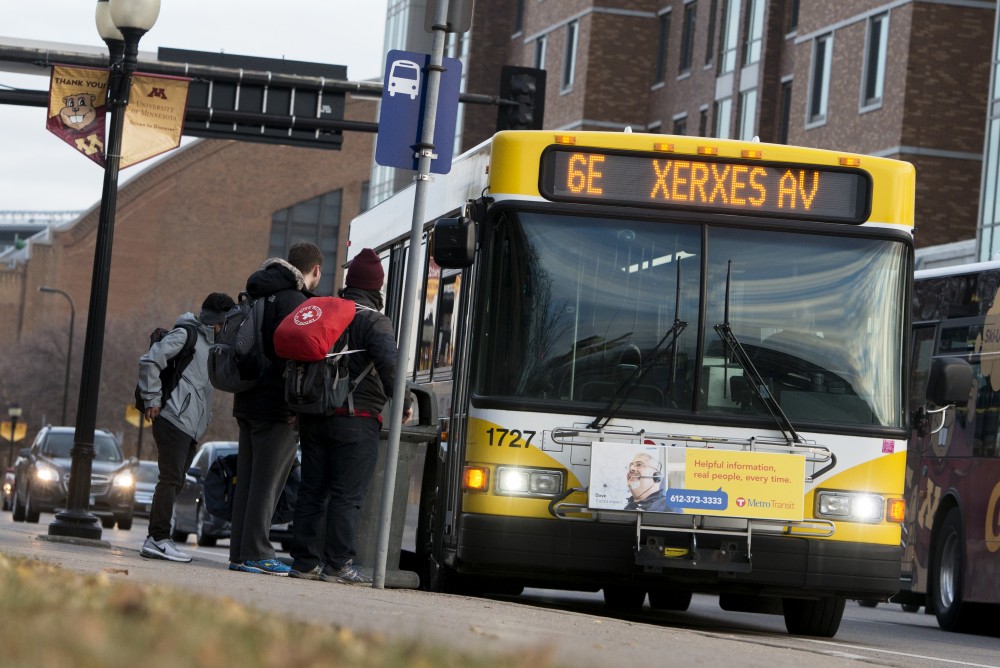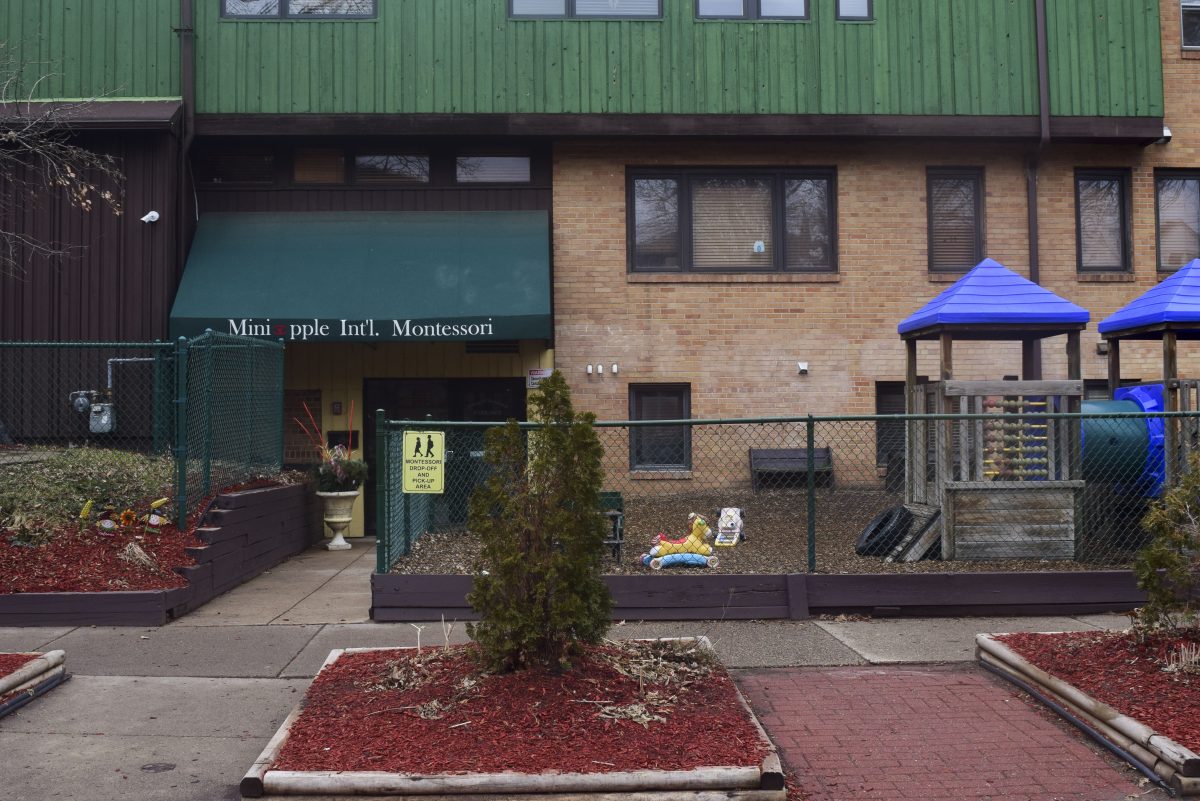Metro Transit is exploring the possibility of replacing a popular Dinkytown bus route with a high-frequency transit line.
The bus rapid transit project through Marcy-Holmes would be part of the proposed E Line, which would run along Hennepin Avenue downtown. The E line would replace the Route 6 bus line, which currently runs through Dinkytown. The City is asking community members to weigh in on a study about two potential routes.
Bus rapid transit routes have fewer stops and allow riders to pay before getting on the bus, similar to boarding the light rail. Two route have been proposed: one along University Avenue Southeast and 4th Street Southeast and another through South Minneapolis.
Chris Lautenschlager, executive director of Marcy-Holmes Neighborhood Association, said the organization is actively advocating for more high-frequency buses due the area’s high ridership. “We have a significant population boom in Marcy-Holmes,” said Lautenschlager.
Buses that stop in Dinkytown average 1,200 rides a day while school is in session, drawing in one of the highest ridership numbers in the Metro Transit system.
The neighborhood has seen a development spike in recent years. Lautenschlager said some developers point to local public transportation when asking the Minneapolis Planning Commission to approve of fewer parking spaces, but the Route 6 buses don’t arrive frequently enough to make up for lost parking.
“Although we told the Planning Commission repeatedly, the message hasn’t gotten through,” he said.
Lautenschlager said he is concerned Metro Transit won’t have enough money to bring the E Line to Dinkytown, but representatives say routes to both Marcy-Holmes and South Minneapolis is financially possible.
“It’s not a question of if it goes … farther south — it won’t go farther north,” said Kyle O’Donnell Burrows, BRT senior planner. “It’s not an either or.”
The next step of the E Line Corridor study is to gather feedback from community members about their neighborhoods and what improvements they’d like to see.
BRT Director Charles Carlson said the results of the study will help Metro Transit make its case for funding to the Metropolitan Council and the State Legislature.
“This study is really figuring out what that need is, and then we figure out the funding,” said Carlson. “It’s not really you find the funding and then you develop the project.”
The planning process will determine where the northern and southern E Line routes would end and station placement.
“The year ahead of us is really about identifying what might be possible,” said O’Donnell Burrows.
An open house to kick-off citizen engagement in the study is scheduled Thursday, Dec. 13 at Marcy Open School.
The study will wrap up in 2019, and construction is projected to begin by 2023.
Correction: A previous version of this article mischaracterized the E Line proposal. It has been proposed by Metro Transit.
















![Gwyn, Macy, Daniel, and Nora [pictured left to right] brave the sub-zero windchill on an icy afternoon to skate together in Van Cleve park. The park, located just north of Dinkytown in Como, becomes a popular winter activity hub for students and nearby residents each year when the park’s fields are frozen to create a public ice skating rink.](https://mndaily.com/wp-content/uploads/2024/01/FzDx2ZjdXLtO33r1j1atrf7jrtQtocs9vnp8k2AT-2-1200x801.jpeg)






